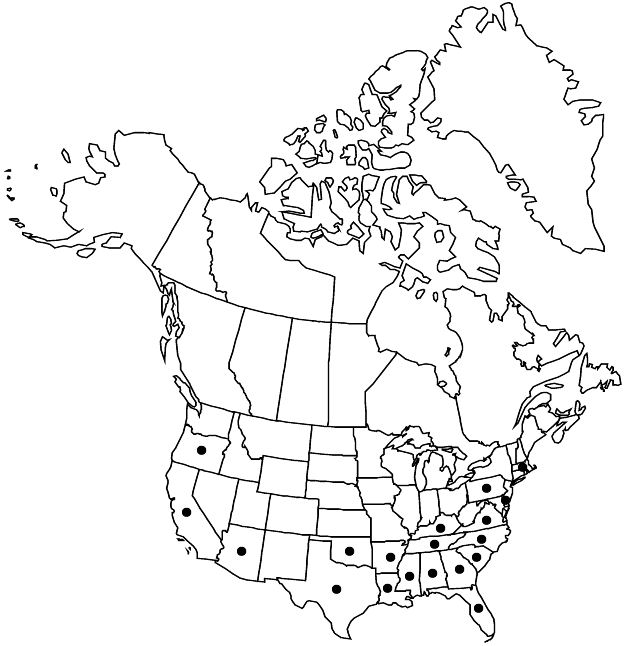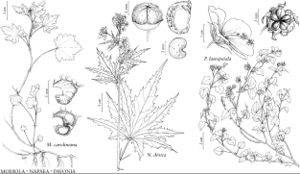Modiola caroliniana
Gen. Hist. 1: 466. 1831.
Stems: flowering apices often ascending, branched, usually 0.2–0.5 m, often rooting at nodes. Leaves: stipules 3–4 × 1.5–3 mm; petiole length 1–2 times blade; blade 1.5–4 × 1.5–4 cm. Pedicels usually shorter than subtending petioles, hairy; involucellar bractlets lanceolate, 4–5 mm. Flowers: calyx 5–7 mm, hairy, hairs simple, 1–2 mm; corolla erect, 6–8 mm; staminal column yellowish; anthers crowded at apex; stigmas equaling number of locules. Mericarps drying black, 5–6 mm, apical spines 1.5–3 mm. Seeds 1.5 mm. 2n = 18.
Phenology: Flowering Mar–Nov.
Habitat: Disturbed, usually moist habitats, shores of ponds and reservoirs, low sandy areas, lawns, roadsides
Elevation: 0–400 m
Distribution

Introduced; Ala., Ariz., Ark., Calif., Del., Fla., Ga., Ky., La., Mass., Miss., N.C., Okla., Oreg., Pa., S.C., Tenn., Tex., Va., South America, introduced also in Mexico, Central America, Pacific Islands (Hawaii).
Discussion
Modiola caroliniana is somewhat weedy but not a serious agricultural weed. It has been reported in Delaware, Massachusetts, New Jersey, and Pennsylvania as a waif but doubtfully persists that far north. It is well established in the southeastern United States and is rather common as a lawn weed in some locations and as a garden weed in California. It probably came from southern South America in wool or cotton. Its closest relative, Modiolastrum K. Schumann, is known from southern South America.
Selected References
None.
